Rage Racer was the first completely original sequel designed from the ground-up for the Playstation. Namco had taken to heart everything that worked in Ridge Racer Revolution but cleaned the slate in order to start from scratch. The 1997 hit was at the time considered one of the best racing games ever created. Creatively it was an entirely new way to interpret the franchise. The over-the-top celebratory nature of the original arcade hit became much more subdued. The entire city had still turned out for the race but it was carried out in a much more serious affair.
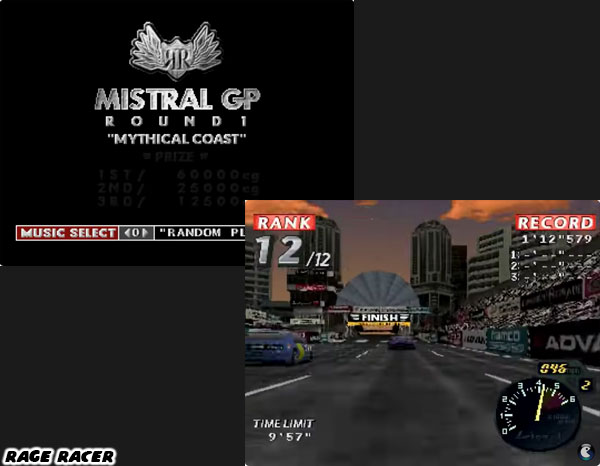
The racers were fueled by a sense of urgency and an insatiable desire to compete according to the opening cinema. The colors had become more muted, the tracks had changed and the city transformed from metropolitan to classical European. French arcs and Spanish cathedrals were mixed with whitewashed Mediterranean villas and Greek temples. The eerie part was how much this new city paralleled Ridge City. The trademark for many Ridge City courses was driving underneath a modern mirrored skyscraper at the start of each race. Rage Racer had the cars drive through a gothic temple instead. It was as if audiences were going through the classical European sister city instead of the traditional Ridge City. The new artistic direction had completely rethought the world and canon of the game.
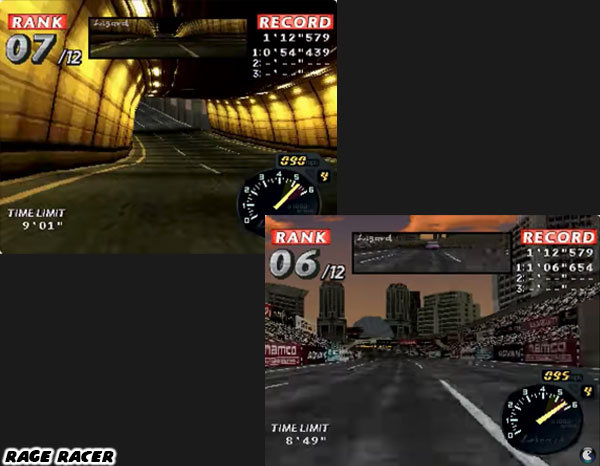
The title had a few tracks, the Mythical Coast, Over Pass City, Lake Side Gate and The Extreme Oval. Yet each of these courses was also very long and challenging. The world had been influenced greatly from the work that the team had put into Rave Racer a few years prior. The courses went up and down steep hills creating massive jumps exhilarating blind turns to test the courage of racers. The courses also included a large number of banked curves which were different than the flat roads that the drift-friendly streets of Ridge City provided. Even small details were not overlooked. The helicopters that were prevalent in earlier entries had returned but now they were joined by a blimp which also followed the action from high overhead. Visually the game looked like an improvement over Ridge Racer Revolution. New graphical touches were added as standard features. The time of day for example changed depending on which class players were competing in.
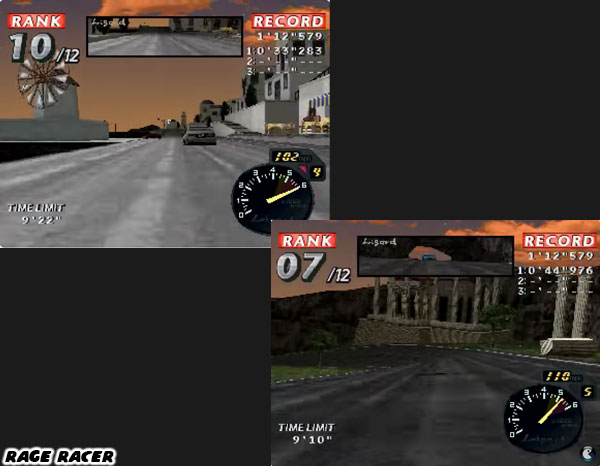
The morning, noon and night lighting added a lot of atmosphere to the game. Players were encouraged to personalize their cars. The game came with an editor that allowed players to change the color of their car and body kit and even add decals to the hood. While customization is in multiple genres today a few decades ago it was revolutionary. Players could also choose the song that would play on each course using a sort of radio selector in the menu screen. It was a nice touch that allowed players to enjoy their favorite mix as they tore through the circuits. Many of the manufacturers from previous games had returned but they featured new models of the familiar cars. Players had to race and earn enough prize money to afford faster cars.
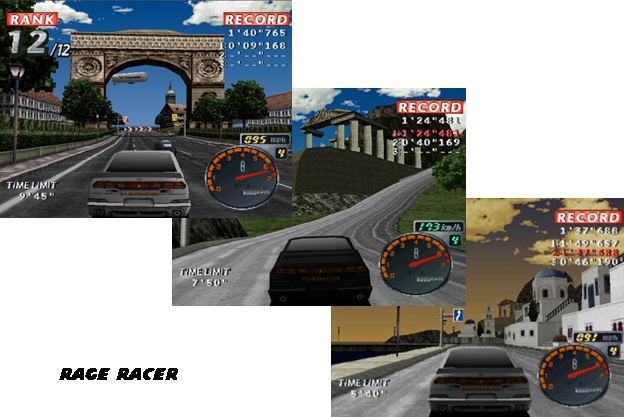
The pace of teach race depended on the class that was competing. The learning curve was not bad considering how realistic the cars handled at the beginning of the game. Drivers still had to obey the common techniques in order to win races. They had to know when to brake, how to approach the apex of each turn, how to draft behind an opponent and even how drifting worked for certain roads and not others. As the player went up in class then the speed at which the tracks were played went up by a few miles per hour. Players had to learn to respond faster to each course and even anticipate the turns ahead of time. Little by little the difficulty would increase and before players knew it they were blazing through the courses at insanely high speeds. The Diable GP for example featured an extreme class of cars that handled like the Angel 0 and Devil 13. The cars could accelerate like a rocket and take turns at over 200MPH. Had the game started at that pace then gamers would have thrown the title out of the window. In the final races players were almost expected to be pre-cognizant as to every turn and opponent a second or more before they got there. Yet somehow instead of being upset with the difficulty players had become addicted to the quick pace and demand for equally fast reflexes.

There was nothing magical about what Rage Racer did to audiences although it seemed like that after a few hours of playing. The developers knew that in order to become great at a racing game players would have to compete through the same courses again and again. This made racers familiar with the course but it also built muscle memory. Racing on the same course multiple times could get tedious but Namco had the answer. Rotate through the stages, change the time of day in order to limit the distance players could see ahead of them and make the competition a little harder. In this way players would get to relearn each stage and be encouraged to buy nicer cars in order to keep up. By increasing the pace of each stage a little bit in each class the players were being programmed to respond and react faster and faster. By the final courses the muscle memory was completely dialed in and players knew the best lines to take without even having to think about it. Audiences could fly through turns with flawless precision and shave minutes off of their best times. Rage Racer turned out to be more than just a fantastic game for the original Playstation. It made serious racers out of even the most casual game players. That was something that not many console games could ever claim to do.
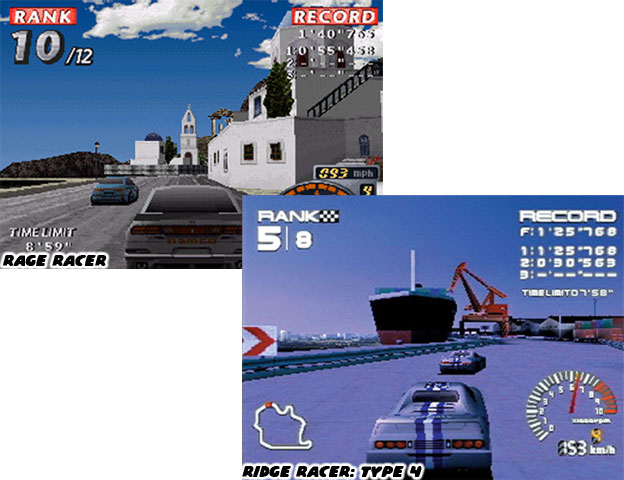
It would take a few years for Namco to come up with the next iteration of the series. As experimental as Rage Racer was it did not encapsulate how far Namco was willing to push the franchise. In 1999 the studio debuted R4 Ridge Racer Type 4. Considered by many to be the peak of the franchise and most accessible sequel. To compare it to a different game it was the "Tony Hawk's Pro Skater 2" of the series. It was a game that made everyone feel like they could finally understand the appeal of the genre and at the same time provided enough of a challenge for die-hard fans to keep returning. The next blog will take a closer look at what the fourth game did for the series.
As always if you would like to sponsor me
please visit my Patreon page and consider donating each month, even as little as $1 would help make better blogs and even podcasts!












Radio stations, funny how picking a track in a racing has evolved into actually picking a genre of music on your 'digital airwaves'
ReplyDelete